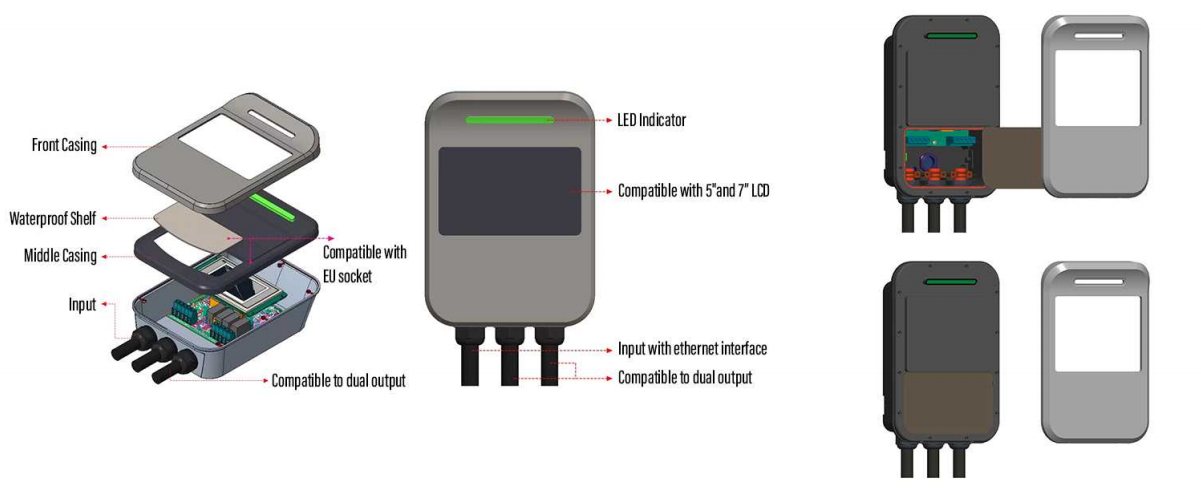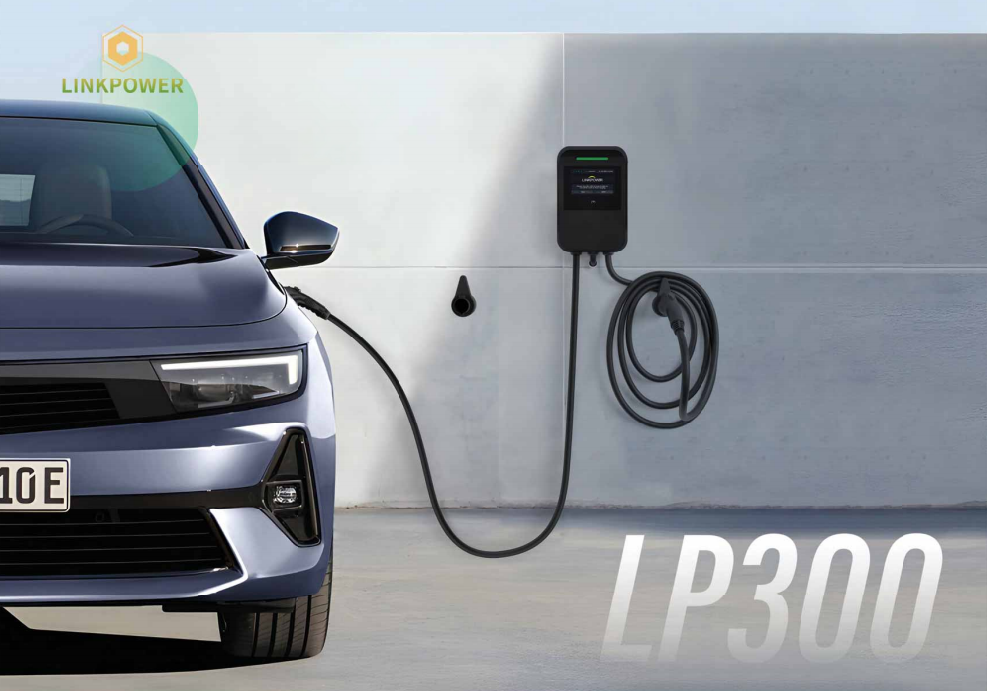As a charging station operator and user, do you feel troubled by the complex installation of charging stations? Are you concerned about the instability of various components?
For example, traditional charging stations consist of two layers of casing (front and back), and most suppliers use rear casing screws for fastening. For charging stations with screens, the common practice is to have openings in the front casing and attach acrylic material to achieve the display effect. The traditional single installation method for incoming power lines also limits its adaptability to different project installation environments.
Nowadays, with the rapid development of electric vehicles and lithium battery technology, countries around the world are accelerating the transition towards sustainable clean energy. The application environment of charging stations has become more diverse, posing new requirements and challenges for charging station hardware suppliers. In this regard, LinkPower introduces its innovative design concept for charging stations, which will better meet the evolving demands of this dynamic market. It offers more convenient installation methods and can save a significant amount of labor costs.
LinkPower introduces a brand-new three-layered structural design to save installation time and reduce labor costs.
Different from the traditional two-layered casing design of charging stations, the new 100 and 300 series from LinkPower feature a three-layered casing design. The fastening screws are moved to the front for securing the bottom and middle layers of the casing. The middle layer incorporates a separate waterproof cover for wiring installation, routine inspection, and maintenance. The top layer adopts a snap-on design, which not only covers the screw holes for aesthetic purposes but also allows for various colors and styles to cater to different user preferences.
Through extensive calculations, we have found that charging stations with three-layered casings can reduce installation time by approximately 30% compared to traditional charging stations. This design significantly saves installation and maintenance costs.

Full-screen middle layer design, eliminating the risk of detachment.
We have noticed that most traditional charging stations adopt a screen display method where corresponding openings are made on the front casing, and transparent acrylic panels are glued to achieve screen transparency. While this approach saves costs for manufacturers and appears to be the ideal solution, the adhesive bonding of acrylic panels presents durability challenges in outdoor charging stations exposed to high temperatures, humidity, and salt. Through surveys, we have found that a significant risk of detachment exists within three years for most acrylic adhesive panels, which increases maintenance and replacement costs for operators.
To avoid this situation and enhance the overall quality of the charging station, we have adopted a full-screen middle layer design. Instead of adhesive bonding, we utilize a transparent PC middle layer that allows light transmission, thereby eliminating the risk of detachment.
Upgraded dual input method design, offering more installation possibilities.
In today’s diverse charging station installation environments, the traditional bottom input can no longer meet all installation requirements. Many newly renovated parking lots and commercial office buildings have already embedded corresponding pipelines. In such cases, the design of a back input line becomes more reasonable and aesthetically pleasing. LinkPower’s new design retains both bottom and back input line options for customers, providing more diverse installation methods.
Integration of single and dual gun design, enabling versatile product application.
With the increasing number of electric vehicles, the demand for charging stations continues to rise. LinkPower’s latest commercial charging station, with a maximum output of 96A, supports dual gun charging, significantly reducing installation costs. The maximum 96A AC input also ensures sufficient power while supporting dual-vehicle charging, making it highly recommended for parking lots, hotels, office buildings, and large supermarkets.

Post time: Jul-14-2023


